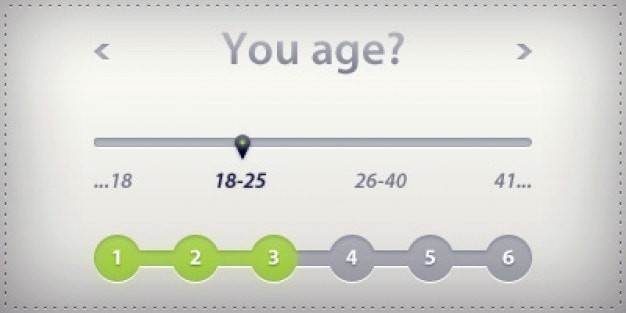A questionnaire is a powerful research tool that involves a series of relevant questions. The question setter or researcher sets the questions to gather information from it. All questions are set to various respondents or people for answers. Researchers include questionnaire design tools in their research work to gather a vast majority of information or data. It is also part of primary and secondary research.
Generally, it is seen that if any person wants to gather information from other persons, he or she implements the questionnaire method for it. This method is useful and straightforward in all possible ways. The questions are asked to the respondents through interviews that can be face to face or telephonic.
Table of Contents
What is the Questionnaire Design?
The script of questions that are written to gather information is called questionnaire design.
All relevant questions are scripted in the piece of paper by the researcher for gaining the standardized information. The questions revolve around the concerned research topics. The information can be about the respondents’ opinions, intentions, behavior, preferences, experience, etc.
The questionnaire design is thought to be a form of a written interview sent to all potential respondents for the data. The questionnaires are cheap and convenient to use. So, it is famous among researchers.
Questionnaire design is a step to step task that a researcher carries out to form a good set of questions. all the steps are co-related.
Features of a Good Questionnaire Design
A good questionnaire needs to have the following features-
1. Legitimate or Valid
A good questionnaire ought to ask what it is supposed to ask; for example, the queries ought to be expressed adeptly so that the respondent comprehends their objectives.
For ensuring this, it is essential to have a “content expert” to check questionnaires during the pilot test. Any doubts or uncertainties ought to be explained until the question is perceived.
A questionnaire with such feature sets is considered valid.
2. Reliable
A reliable questionnaire yields a similar answer if a similar inquiry is presented to the respondent consistently in a short duration again and again.
Such reliability can be accomplished by playing out a “test-retest,” for example, using a similar survey to the respondent a subsequent time and check for consistency of the response.
Any error in the responses could be because of the absence of clearness of the queries, and this ought to be audited and reworded.
3. Intriguing or Interesting
A good questionnaire should be interesting, as such questionnaires are bound to be finished by the respondent, thus producing a superior reaction rate.
To ensure this, the researchers should place a few considerations into posing inquiries applicable to the respondent.
4. Concise or Succinct
For a questionnaire to be good, it should also be succinct. Such questionnaires pose inquiries that intend to answer just the research goals. Any inquiries beyond the extent of the research ought to be avoided.
It is basic for researchers to incorporate strategies to gather more information, whether or not this information is significant. This normally occurs when the analyst has not appropriately considered the research goals. It risks losing such a large number of questions.
Therefore, it is crucial to being clear about research goals to make a concise questionnaire.
Fundamental Steps to Design a Questionnaire
Questions asked in the questionnaire method depend on various the researcher’s topics and other fundamentals. Every researcher has its way of setting questions, so the questionnaire design remains different for every researcher. However, the questionnaire design steps remain the same.
Following are the fundamental steps for questionnaire design:
Step 1: Identification of your research goal and the relevant topic of the questionnaire
The first step here is identifying the topic on which your entire questionnaire will be based on. Find your research goals, and then make the respective question sets.
What kind of research you want to conduct thorough questionnaires, it all depends on your questionnaire methods. The identification of topics is essential in designing an ideal questionnaire set. A researcher or questionnaire setter should do it.
Learn about the topic before heading to the actual questionnaire design; it will help you design a good set of questions.
Step 2: Know your respondents or set your respondent’s target.
After identifying your research’s core topic, the next thing you have to do is set the target respondents.
Whom you want to target as respondents through your questionnaire methods.
Conduct various questionnaire methods to know your audience target in a good way.
Step 3: Create questions
The next step is to develop questions about the core topic. These questions are set to gather all types of information for drawing conclusions and ideas.
The questions are developed to extract all information to find out the solutions. As a researcher, you need to write down the questions in your notebook for conducting primary research through the questionnaire method.
While creating the questionnaires, you have to be extra careful that you only develop strong questions. The strong questions make the questionnaire method more good and reliable. Unclear questions may make the whole questionnaire method look bad.
And the respondent may lose interest. Set the most relevant questions for questionnaire methods.
Step 4: Selection of questions type
A good questionnaire design is made up of a good question set. As a researcher, you have to develop those questions that are qualitatively good and strong. Weak questions are bad for the questionnaire method.
Nowadays, there is a lot of variety of phrasing questions. These questions can be explorative and open or closed and non-exploratory. All respondents prefer open-ended questions. Make the selection of question type very wisely for conducting your further research work or questionnaire design.
While formulating the questions, you have to be extra careful to develop strong questions for the questionnaire. Please don’t create any weak questions as they are not good for your research process and the questionnaire design.
Simultaneously, the questions should be complex enough to make the process analyzable and accessible as per the respective topic’s need.
Step 5: Design the sequence of questions and format
The sequencing of questions is important here. You have to sequence all your questions with sincerity. Before putting a questionnaire to all respondents, you have to sequence it as per your need. Every question should be answered in the questionnaire set by the researcher.
Research design is called the basic framework, which has all questions created to get practical answers. The research design comprises all types of decision-making tools with different questionnaire methods. The researcher makes the questionnaire design as per the aspect. It is well documented in this step of the questionnaire design.
This step is one of the vital steps in the whole questionnaire design process. It carries the actual implementation of the questionnaire design process around the respective research topic or problem statement.
Under this step, you have to conduct actual research to formulate questions using all types of data: primary, secondary, qualitative, quantitative, etc. all types of data tools are used here to generate the data and information. As a researcher or analyst, you have to be extra sure about this step.
Step 6: Evaluation and optimization
After the sequencing of all questions, the researcher has to evaluate all questions. The evaluation and optimization are done here in this step. All researchers run a pilot program to observe the evaluation process of the questionnaire design.
After completing all steps, you have to write your outcome(question list) as the final questionnaire design. As a researcher, you have to also show the research outline in your questionnaire design.
The resemblances and several other things should also be presented in the outcome. all questions should be clear in the list for getting the data from the potential respondents.
In simple words, the creation of the questionnaire design is the outcome of all the above steps. Your questions are ready to be asked to the respondents.
How to deal with Sensitive Questions of a Questionnaire?
The questionnaire method includes all types of questions. Sensitive questions are used in the questionnaire design a bit more cautiously. The following ways are followed while dealing with sensitive questions:
- The researchers should guarantee the anonymity of all their respondents. Confidentiality should be maintained throughout the questionnaire method.
- Build a comfort zone around the sensitive questions. The respondents feel a sense of comfort while moving into sensitive questions. By this, they can answer all questions easily.
- While framing the sensitive questions for the questionnaire method, refocus on the core point of the question. In some instances, it is seen that researchers reframe such questions for their respondents.
- Add more logical and comforting sensitive questions to gather information from the respondents. It makes your research work easy and straightforward.
- Instruct the respondents to answer questions in their authentic opinions as far as possible. Allow the respondents to answer questions to full flexibility.
Advantages of a Good Questionnaire Design
The advantages of the questionnaire design are enormous. All researchers widely accept it. Following are the advantages of the questionnaire design:
1. The questionnaire design is inexpensive
The whole method of questionnaire design is cheap and affordable. The researchers can make questionnaire design out of low cost. They don’t have to make any high costs for the work. It is all done easy and cheap to perform.
A questionnaire design can be placed on the website to email to respondents in an easy way. The question set can find its way to the respondents for responses.
2. Questionnaires are practical in every sense.
The questions asked in the questionnaire method are open-ended and exploratory. All questions are developed for getting good responses for further analysis. Choose the question type wisely. All questions are good, so the responses are recorded easily.
3. Questionnaires offer a good way to get results.
Every questionnaire intends to generate a result. With the questionnaire method, heading to the results is easy and simple. The researcher can lead to the results or conclusion part with the questionnaire method.
4. The questionnaire method offers analysis and observation easily
There is no need to check the gathered data separately. After getting all the respondents’ responses, the questionnaire method tool is used for easy analysis and observation. It is all embedded in the questionnaire design system.
Summing Up!
The questionnaire design tool or method is an excellent approach to getting information on the respective research topic.
The researchers start their research process by following all the steps in an orderly fashion to create a good questionnaire. They do so to get valuable data and information out of their research topic or other general topics.
The steps help obtain a good questionnaire set for the respondents. All researchers make the question sets to gather all different types of information through its questions.
How useful do you consider a questionnaire for researchers?
Liked this post? Check out the complete series on Market research


